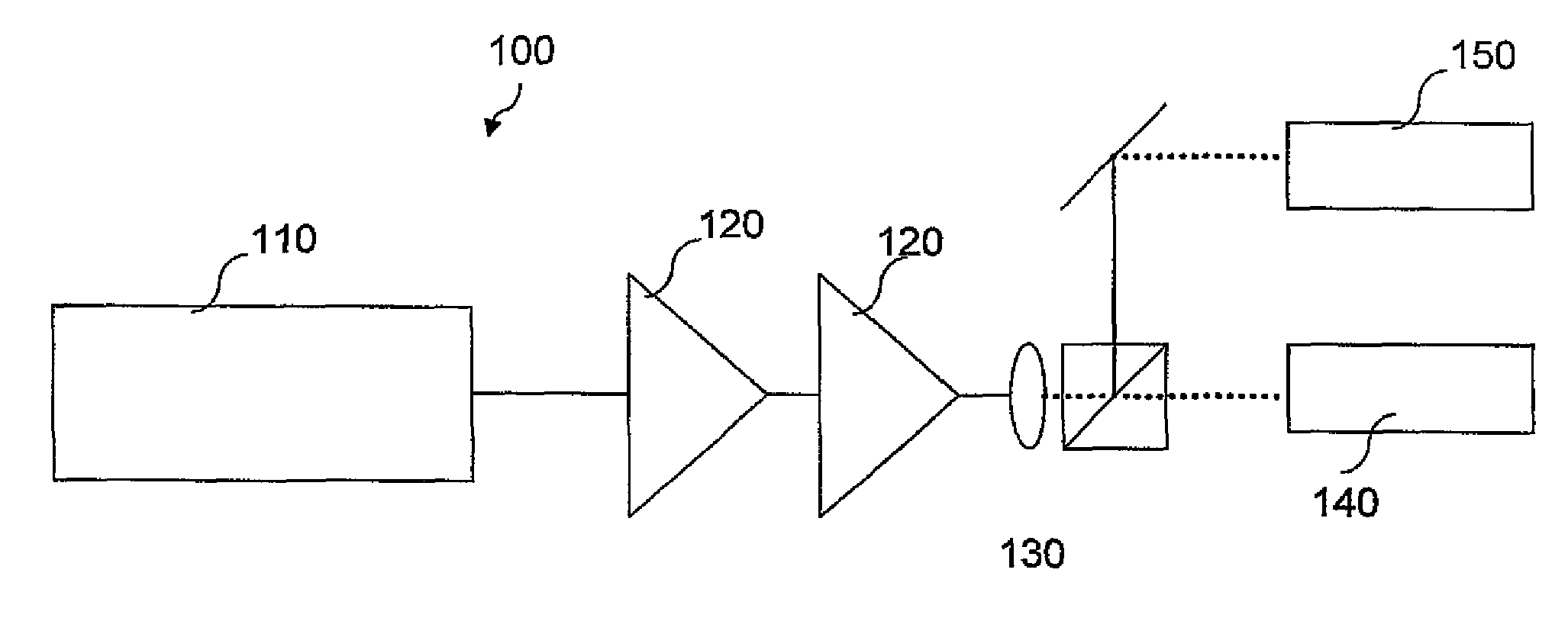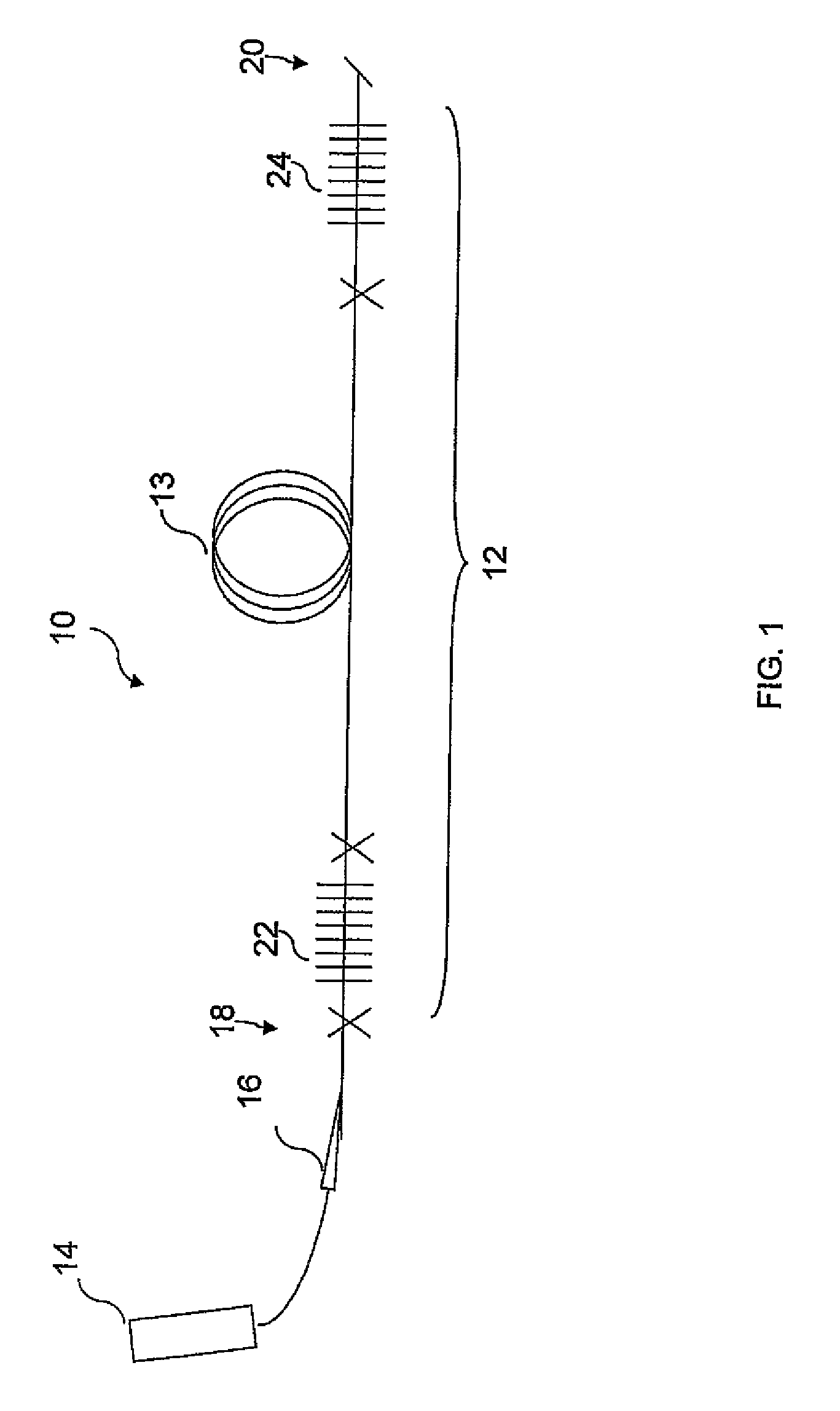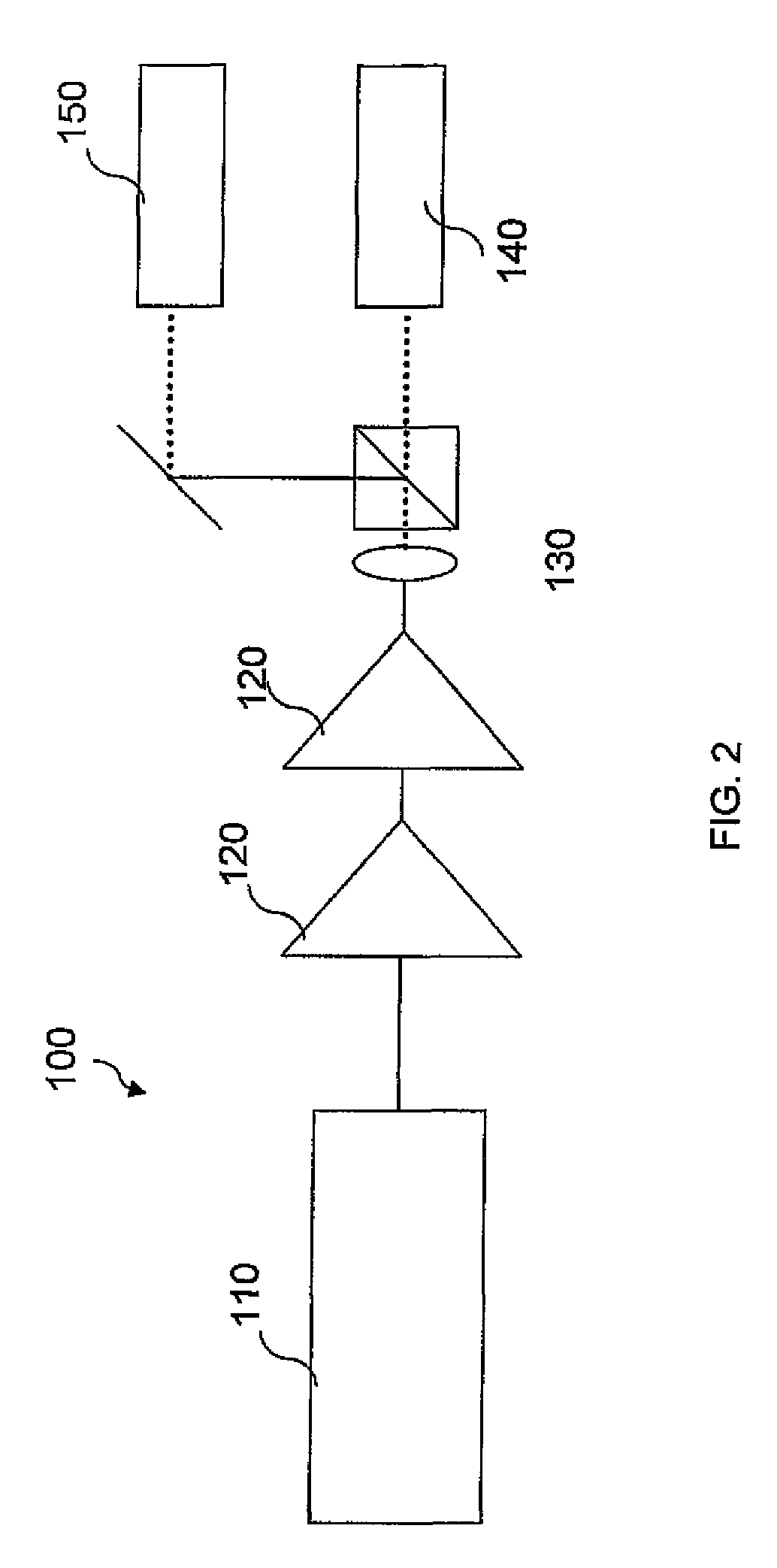Fiber lasers
a fiber laser and fiber technology, applied in the field of fiber laser devices, systems and methods, can solve the problems of high thermal effects, inability to lase at the required wavelength, inability to achieve high power (kw cw) and moderate pulse energy (mj) pulse energy at band iv wavelengths, etc., to increase the overall conversion efficiency and increase the ability to wavelength selection
- Summary
- Abstract
- Description
- Claims
- Application Information
AI Technical Summary
Benefits of technology
Problems solved by technology
Method used
Image
Examples
example 1
Experiment: Long Wavelength Output Using Tm:Silica Fiber laser
[0076]In the following examples, a 20 / 200 Tm doped double clad silica fiber with the specifications listed in Table 2 was used.
[0077]
TABLE 2fibervalueCore size (μm)20Core NA0.11Clad size (μm)200Clad NA0.46Dopant conc.0.51026 atoms / m3Fiber length5Clad shapeoctagon
[0078]The laser performances of a given cavity with specified surface reflections were simulated at specific signal and pump wavelengths. The simulation tool which was used has the ability to predict both laser wavelength and efficiency curve, for both spectrally flat mirrors and for bulk grating (BG) mirrors.
[0079]Setup I.
[0080]Reference is now made to FIG. 5, which is an illustration of a first setup of a fiber laser which was tested. Energy source 14 was a diode pump working at wavelength of approximately 790 nm. Coupling mechanism 16 was a free space beam combiner. First and second reflectors 22 and 24 were butted to flat dichroic mirrors, having characteristi...
example 2
Design Example: Influence of Parameters on Lasing Wavelength and Efficiency
[0104]As an example of selecting parameters, a 10 / 125 Tm fiber was selected. The lasing wavelength was fixed at 2095 nm, which is similar to Ho:YAG. Several different doping concentrations were tested. For each doping concentration, the fiber length and the reflectivity of the output coupler was varied. Parameters and values are listed in Table 7 below.
[0105]
TABLE 7ParameterUnitValueN (TmAtoms / m3variableconcentration)Core diameterμm10Clad diameterμm125Pump claddB / mvariableabsorptionSignal core lossdB / m0.22L (fiber length)mvariableR1 (reflectivity)%variableR2 (reflectivity)%80Pump powerW32Pump sideR1
The constraints are as follows:[0106]1) The maximum fiber length is 80-90% pump absorption in order to completely invert the gain media to ensure true CW lasing.[0107]2) The reflectivity of the mirror and length can then be selected for efficient operation for a given dopant concentration.
[0108]Reference is now mad...
example 3
[0115]An externally stabilized signal laser diode (Lumics LU1064M150-1001002, S / N 51440) was used. In order to obtain a narrow spectrum in pulsed operation, the FBG was moved from about 1.8 m from the diode to about 60 cm from the diode. In addition, a polarization controller was placed between the FBG and the diode to ensure that alignment of the feedback from the FBG was aligned to the polarization of the diode. All CW measurements were performed at 300 mA of pump current. All pulsed measurements were performed at 100 ns pulse, 100 kHz, and 1.2 A peak current (ILX LDP-3840).
[0116]The diode was evaluated in CW and pulsed operation, with and without the depolarizer. Temporal traces and spectra were recorded.
[0117]Depolarization was done using a depolarizer setup as described above with reference to FIG. 3. A polarization controller was used in the experiment. A polarization analyzer was used for measuring the polarization state purity. Reference is now m...
PUM
 Login to View More
Login to View More Abstract
Description
Claims
Application Information
 Login to View More
Login to View More - R&D
- Intellectual Property
- Life Sciences
- Materials
- Tech Scout
- Unparalleled Data Quality
- Higher Quality Content
- 60% Fewer Hallucinations
Browse by: Latest US Patents, China's latest patents, Technical Efficacy Thesaurus, Application Domain, Technology Topic, Popular Technical Reports.
© 2025 PatSnap. All rights reserved.Legal|Privacy policy|Modern Slavery Act Transparency Statement|Sitemap|About US| Contact US: help@patsnap.com



